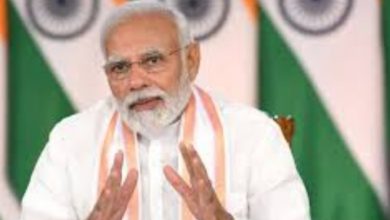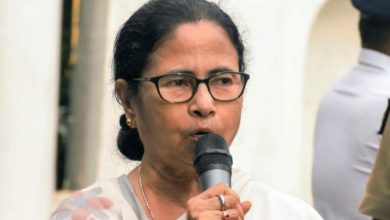A Jan. 6 mystery: Why did it take so long to deploy the National Guard?

As the House committee investigating Jan. 6 used its prime-time hearing Thursday to document President Donald Trump’s lack of forceful response to the attack on the Capitol his supporters, it again raised one of the enduring mysteries of that day: Why did it take so long to deploy the National Guard?
The hearing did not fully answer the question, but it shed light on Trump’s refusal to push for troops to ass police officers who were overrun an angry mob determined to halt the certification of the 2020 presidential election.
The mobilization and deployment of National Guard troops from an armory 2 miles from the Capitol was hung up confusion, communications breakdowns and concern over the wisdom of dispatching armed soldiers to quell the riot.
It took more than four hours from the time the Capitol Police chief made the call for backup to when D.C. National Guard troops arrived, a gap that remains the subject of dueling narratives and finger-pointing.
The hearing featured the testimony of Matthew Pottinger, deputy White House national security adviser, who resigned in protest on the day of the attack. On that day, Pottinger had an urgent discussion with White House chief of staff Mark Meadows about why National Guard troops had not been deployed to the Capitol.
Pottinger had been alerted a former colleague, Charles Kupperman, who in turn had been contacted someone seeking to help the mayor’s office in Washington as it desperately searched for help from the White House. Kellyanne Conway, a former White House adviser, also fielded a call from someone trying to help Mayor Muriel Bowser find anyone in the West Wing willing to treat the situation as an emergency.
Trump has made the false claim that he had told his aides he wanted 10,000 National Guard troops and that Speaker Nancy Pelosi had rejected the request. The president did tell advisers in the days before Jan. 6, 2021, that he wanted a National Guard presence, but it appeared he wanted the troops as extra protection for his supporters, his aides have privately acknowledged.
The House committee said in December that Meadows had “sent an email to an individual about the events on Jan. 6 and said that the National Guard would be present to ‘protect pro-Trump people’ and that many more would be available on stand.”
Numerous government investigations have established that law enforcement agencies gravely misjudged the threat that the Jan. 6 protests could turn violent. They also have come to general agreement on one fact: Law enforcement and military officials planning for Jan. 6 thought that proactively mobilizing the National Guard was a bad idea. The image of armed troops surrounding the Capitol, they believed, was incongruous with a ceremony cementing a peaceful transfer of power.
For some officials, the memory of Trump essentially duping the defense secretary and the chair of the Joint Chiefs of Staff into joining him in June 2020 on a march across Lafayette Park for a photo op amid widespread protests against police brutality was still fresh.
Gen. James McConville, the Army chief of staff, told a Defense Department inspector general investigation in November that “many people talked about the optics of having military at the Capitol. What that would look like, how that would influence even some of the demonstrators or protesters.”
Chropher Miller, the acting defense secretary, was more blunt, saying “there was absolutely no way” he was going to put U.S. forces at the Capitol. He was conscious of news articles that Trump’s advisers were pushing him to declare martial law and invalidate the election results, he told the inspector general investigation, and having troops at the Capitol might fuel suspicion that he was trying to aid a coup.
“If we put U.S. military personnel on the Capitol,” Miller said, “I would have created the greatest constitutional crisis probably since the Civil War.”
Two days before Jan. 6, he authorized the Army secretary to use a stand quick reaction force of National Guard troops, but “only as a last resort in response to a request from an appropriate civil authority,” the Defense Department inspector general found.
But accounts of the actions — and inaction — of top officials after rioters breached the security perimeter set up the Capitol Police and forced their way into the building have diverged wildly in various government investigations, public testimony and news reports.
Most of them seem to agree that Trump was a barely felt presence that afternoon. During the Jan. 6 committee’s first hearing, Rep. Liz Cheney, R-Wyo., said that Trump “placed no call to any element of the U.S. government to instruct that the Capitol be defended.”
It was Vice President Mike Pence who was critical to trying to move forces to the Capitol, officials have said.
“There were two or three calls with Vice President Pence. He was very animated, and he issued very explicit, very direct, unambiguous orders. There was no question about that. And I can get you the exact quotes from some of our records somewhere,” Gen. Mark Milley, the Joint Chiefs chair, told the House committee in an interview that aired Thursday evening. “But he was very animated, very direct, very firm to Secretary Miller. Get the military down here, get the Guard down here. Put down this situation, et cetera.”
contrast, Milley said, the call he received from Meadows was about preserving Trump’s image. He recalled that Meadows said something to the effect of: “We have to kill the narrative that the vice president is making all the decisions. We need to establish the narrative that, you know, that the president is still in charge and that things are steady or stable.”
“I immediately interpreted that as politics, politics, politics,” Milley said.
The inspector general report cleared top Pentagon officials of any wrongdoing over their response to the Jan. 6 attack. But a former D.C. National Guard official harshly criticized the report, accusing top Army officials of blocking efforts to deploy National Guard troops and lying about their actions to investigators.
Col. Earl Matthews, who was the top lawyer for the D.C. National Guard, singled out two generals — Charles Flynn and Walter Piatt — for continuing to oppose a National Guard deployment even after Chief Steven Sund of the Capitol Police had made an urgent call for backup.
Flynn is the brother of Michael Flynn, who was Trump’s first national security adviser and later took an active role in trying to overturn the results of the 2020 election.
Adding to the deployment delay was a zantine stew of competing authorities and jurisdictions that had different measures of responsibility for bringing order on Jan. 6. For instance, for Sund to initiate a request for D.C. National Guard troops at the Capitol, he needed the approval of an obscure organization called the Capitol Police Board, a group made up of the House and Senate sergeants-at-arms and, oddly, the architect of the Capitol.
Sund has testified that precious time was lost as he waited for approval from the board, and that he was unaware of the machinations above his level.
And, amid the swirling chaos, it appears the group had little understanding of the crucial role it played in protecting the Capitol.
As a Senate report on the attacks found, “none of the Capitol Police Board members on Jan. 6 could fully explain in detail the statutory requirements for requesting National Guard assance,” which added to the delay in getting troops to the Capitol.





